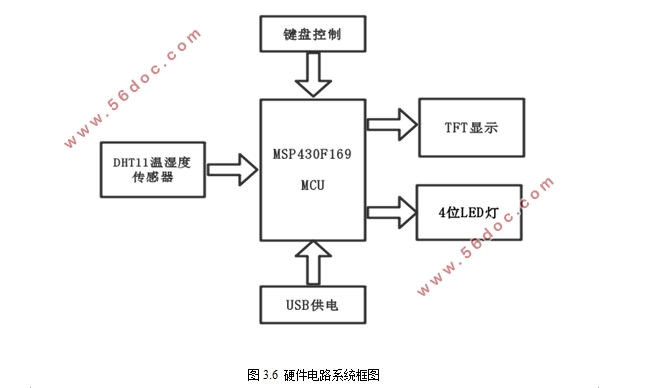农业温室环境监测与控制系统的设计
来源:56doc.com 资料编号:5D26670 资料等级:★★★★★ %E8%B5%84%E6%96%99%E7%BC%96%E5%8F%B7%EF%BC%9A5D26670
资料以网页介绍的为准,下载后不会有水印.资料仅供学习参考之用. 密 保 惠 帮助
资料介绍
农业温室环境监测与控制系统的设计(论文15000字)
摘要:温度、湿度是生产中常见的两个参数,也是温室技术中重要的关键因素。为了监测和控制农业温室中的温度、湿度的变化,本文基于MSP430单片机和DHT11温湿度传感器,设计了温室中温度、湿度的实时监测和控制系统的硬件电路和软件程序,实现在显示器上显示温度、湿度的读数和多个点的温度、湿度的变化曲线以及对温湿度的控制。进行实际测试验证后,验证结果证实了设计的可行性。通过系统,可以对温室的温度和湿度进行实时监测,控制温室温湿度的变化,为低温季节喜温植物栽培或育苗提供相适应的环境。
关键词:温室、温湿度测量、温湿度控制、MSP430、DHT11
Environmental monitoring and control system for agricultural greenhouse
Abstract:Temperature and humidity are two common parameters in production and they are also important key factors in greenhouse technology. In order to monitor and control the change of temperature and humidity in agricultural greenhouse, this article designs hardware circuit and software programabout the real-time detection and the control system of the temperature and humidity in the greenhouse by using MSP430 MCU and DHT11 which is the sensor of temperature and humidity,in order to display the results of temperature and humidity and the curve of multiple points’ temperature and humidity and control the change of temperature and humidity .A physical model was made and test, and the result verified the feasibility of the design. Through this system, the temperature and humidity of the greenhouse in real time can be monitored and controlled so as to provide suitable environment for plant or seeding raising in the low temperature season.
Keywords:greenhouse, temperature and humidity measurement, temperature and humidity control, MSP430,DHT11


目录
第一章绪论 1
第二章方案设计 3
第三章硬件电路设计 6
3.1 DM430-L最小系统板 6
3.2 温湿度采集电路设计 6
3.2.1 DHT11电路设计 6
3.2.2 DHT11的采集数据传输与处理 7
3.3 TFT显示屏显示电路设计 8
3.4 电源 8
3.5控制系统电路设计 9
3.6矩阵键盘电路设计 9
3.7 硬件电路系统框图 10
第四章 软件程序设计 11
4.1 main函数程序设计 11
4.2 DHT11采集数据实现程序设计 12
4.3 键盘控制程序设计 14
4.4 LED灯控制程序设计 19
第五章测试方案与测试结果分析 21
5.1 测试方案 21
5.2 测试步骤与结果 21
5.3 测试结果分析 25
第六章总结与展望 26
参考文献: 27
|





